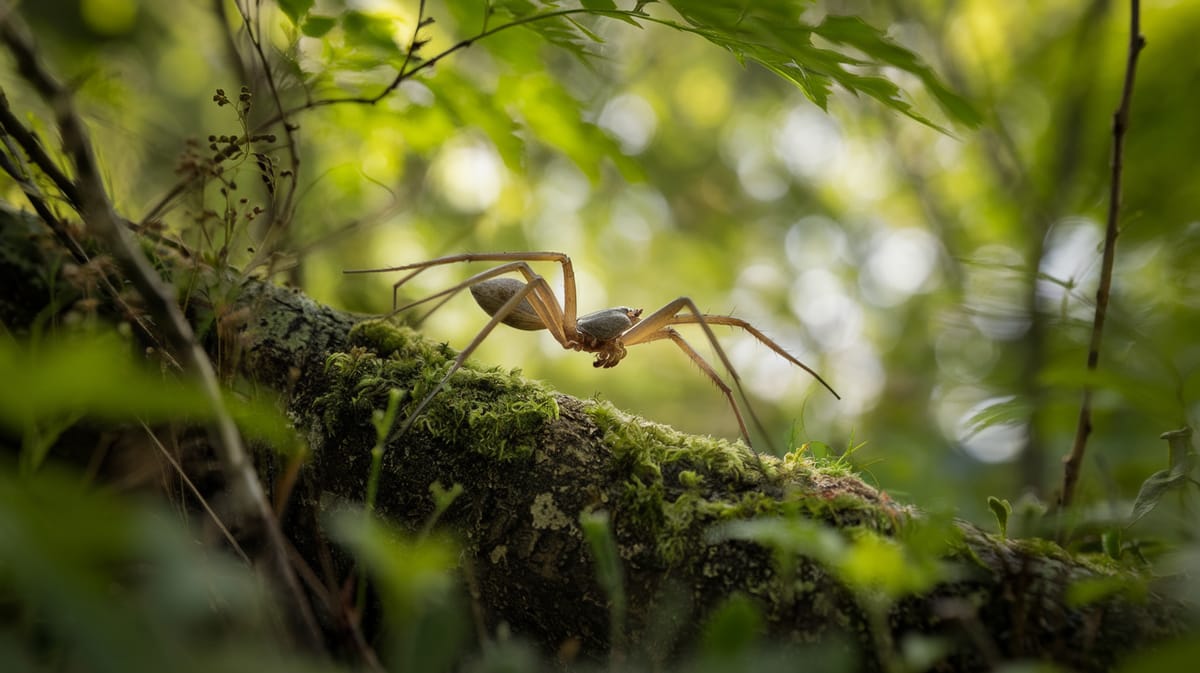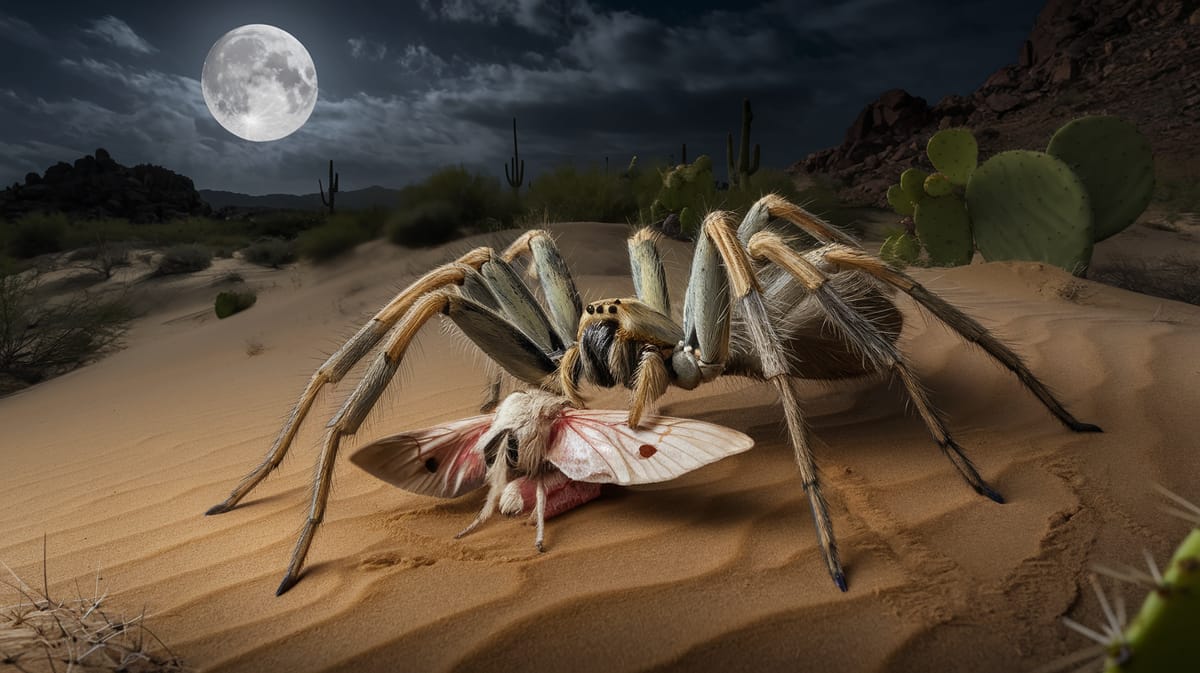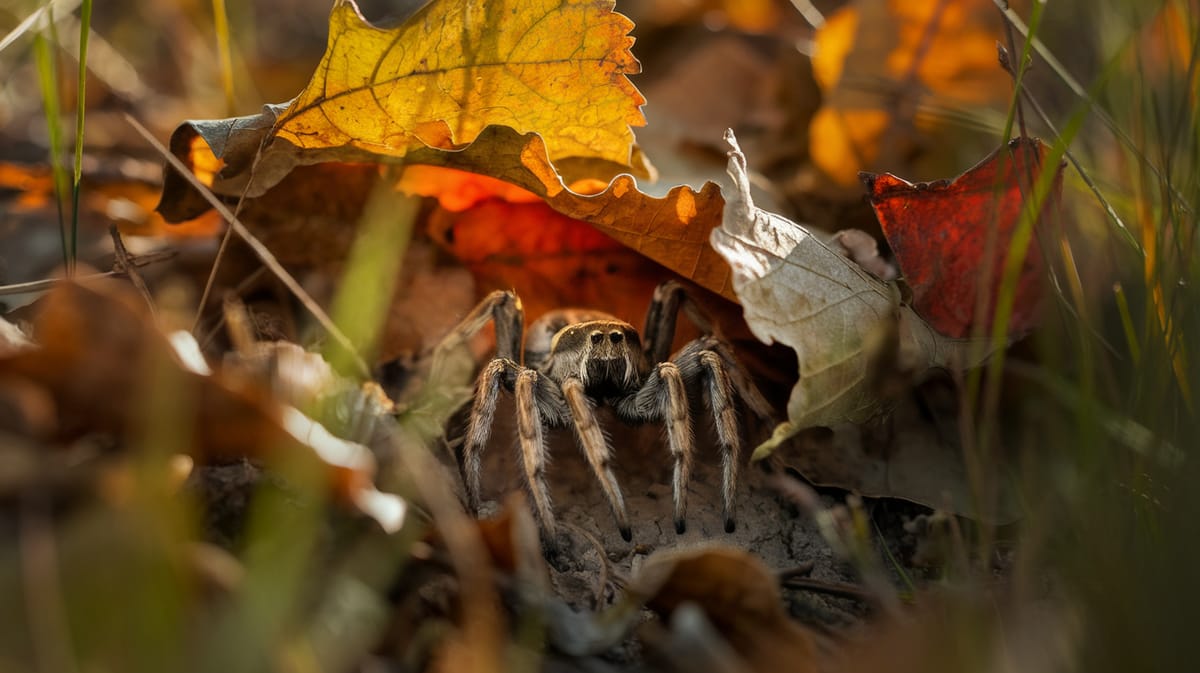Wolf Spider
Swift and stealthy, the Wolf Spider prowls the ground with unmatched agility, playing a vital role in controlling insect populations. Its keen eyesight and quick reflexes make it a formidable hunter.

Key Insights at a Glance
Did You Know?
Taxonomy & Classification
Wolf spiders are agile hunters with excellent vision, adapting to diverse habitats where they rely on speed and stealth rather than webs. Let's understand the evolutionary journey and classification of these remarkable predators.
Global Presence
Wolf spiders are found worldwide, with over 2,300 species thriving in various climates and ecosystems, showcasing their adaptability.
Evolutionary Resilience
Dating back to the Jurassic period, wolf spiders have survived millions of years, adapting through significant environmental changes.
Lifecycle and Growth
A remarkable journey of transformation from Egg to Adult.
Egg
Wolf spider eggs are encased in a silk sac, which the female carries attached to her spinnerets for protection.
Spiderling
Spiderlings hatch and initially stay with their mother, dispersing later to hunt and grow independently.
Adult
Adults are solitary hunters, using their speed and camouflage to capture prey, ensuring continuity through mating.
Dietary Habits
A cunning hunter with extraordinary agility, this creature diversifies its diet to include insects, small animals, and occasional prey.
| DIET TYPE | DESCRIPTION |
|---|---|
| Primary Diet | Primarily feeds on insects like crickets, grasshoppers, and beetles, using speed and stealth to catch them. |
| Secondary Diet | Sometimes preys on small vertebrates such as frogs and lizards, supplementing its diet with these creatures. |
| Occasional | Occasionally consumes small mammals or birds, demonstrating adaptability during food scarcity. |

Behaviour and Adaptations
Discover the fascinating traits that make the Wolf Spider a skilled predator in the wild.
Nocturnal Hunting
Expert night hunters, relying on keen vision and stealth to catch prey.
Agile Movement
Swift, nimble movements allow them to pursue and capture prey effectively.
Keen Vision
Eight well-developed eyes provide excellent vision to detect prey and threats.
Ecosystem Impact
Wolf Spiders play a crucial role in maintaining ecological balance through predation and supporting biodiversity.
Natural Pest Control
Regulates insect populations by preying on pests, aiding in natural pest control.
Food Chain Participant
Serves as prey for birds and mammals, linking trophic levels.
Soil Health Contributor
Enhances soil quality by aerating and mixing organic material.
Conservation Challenges
Understanding and addressing the major threats to Wolf Spider populations.
Habitat Loss
Urbanization reduces natural habitats for wolf spiders, impacting their survival.
Pesticide Exposure
Pesticides contaminate the soil, harming wolf spiders and reducing prey availability.
Climate Change
Altered weather patterns affect wolf spider reproduction and food sources.
Frequently Asked Questions
How long do Wolf Spider live?
Wolf spiders typically live for one to two years. Some may survive longer in favorable conditions. Their lifespan can vary based on factors like habitat and climate. These spiders are known for their adaptability and resilience, which helps them survive in various environments.
What do Wolf Spider eat?
Wolf spiders are carnivorous and primarily eat insects such as crickets, ants, and beetles. They are active hunters, using their keen eyesight and speed to catch prey. Occasionally, they may consume small vertebrates like lizards or frogs if the opportunity arises.
Are Wolf Spider poisonous?
Wolf spiders are not poisonous to humans. They do have venom, which they use to immobilize prey, but it's generally harmless to humans. A wolf spider bite might cause mild irritation or discomfort, similar to a bee sting, but it poses no significant health risk.
Are Wolf Spider endangered?
Wolf spiders are not considered endangered. They are widespread and adapt well to various habitats, including forests, grasslands, and urban areas. Their ability to thrive in diverse environments contributes to their stable population levels across different regions.
What do Wolf Spider symbolize?
Wolf spiders often symbolize independence, resourcefulness, and adaptability. In various cultures, they are seen as symbols of protection and courage due to their solitary nature and hunting prowess. These traits make them fascinating creatures in the context of symbolism.
Do Wolf Spider bite?
Yes, wolf spiders can bite if threatened. Their bites are not dangerous to humans and usually result in minor symptoms like redness, swelling, or itching. Wolf spiders prefer to avoid confrontation and will only bite if they feel threatened or provoked.
What color are Wolf Spider?
Wolf spiders are typically brown, gray, or black, with various markings and patterns that provide camouflage in their natural surroundings. Their coloration helps them blend into environments like forests, grasslands, and rocky areas, aiding in hunting and avoiding predators.
Does a Wolf Spider have wings?
No, wolf spiders do not have wings. They are primarily ground-dwelling arachnids and rely on their speed and agility to catch prey and escape threats. Their anatomy is adapted for running and jumping rather than flying.
What does a Wolf Spider look like?
Wolf spiders are medium to large spiders with robust bodies and long, strong legs. They have distinct eye arrangements, with two large eyes on top and several smaller ones below. Their hairy appearance and color patterns help them blend into their environment.
Is a Wolf Spider an insect?
No, a wolf spider is not an insect. It is an arachnid, belonging to the same class as scorpions and ticks. Arachnids have eight legs, while insects have six. Wolf spiders are known for their hunting skills and distinctive eye arrangement.
Related Insects
Discover insects with similar characteristics to Wolf Spider - including shared habitats, diets, and taxonomic classifications
Share this profile
Help others discover Wolf Spider
